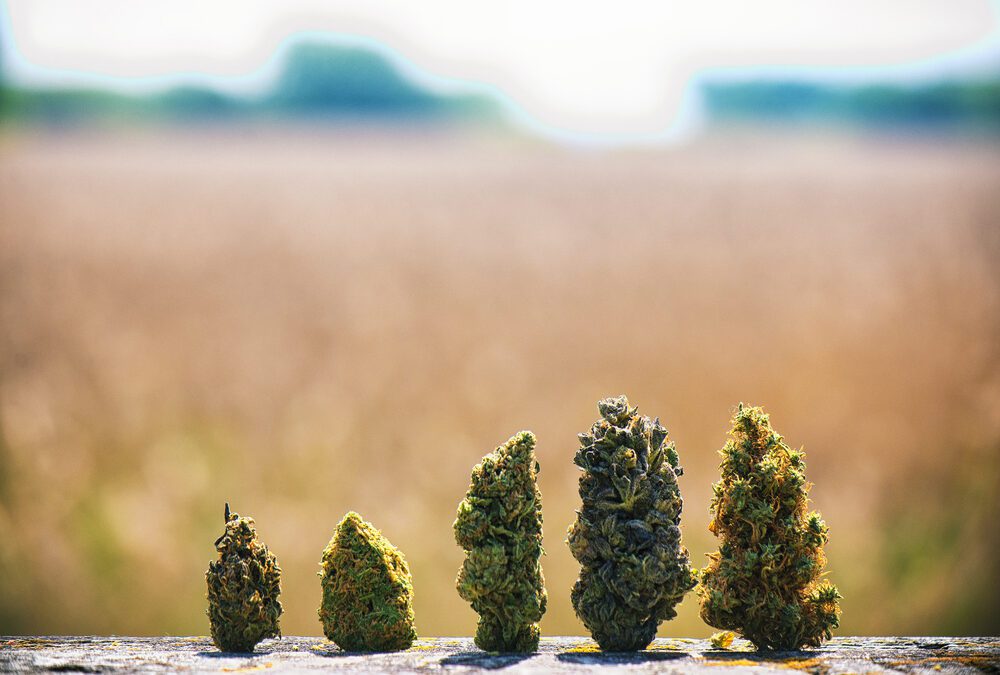Botanically, hemp and marijuana are from the same species of plant, Cannabis sativa. However, hemp and marijuana are genetically distinct forms of cannabis that are distinguished by their use, effects, chemical composition and definitions in terms of U.S. law.
But when the discussion surrounds cannabis and hemp, the term “psychoactive” is often misused. That’s why at Terrapin, we prefer to use the word “intoxicating” rather than “psychoactive” to describe the effects of getting “stoned.”
What does “psychoactive” mean as related to cannabis?
One of the most common mistakes made in differentiating between marijuana and hemp is referring to the effects of CBD as nonpsychoactive.
The word “psychoactive” pertains to chemical substances that act primarily upon the central nervous system, where brain function is altered, resulting in temporary changes in perception, mood, consciousness and behavior.
Researchers have demonstrated that cannabidiol (CBD) confers antipsychotic, anxiolytic (anxiety-reducing) and antidepressant effects. These effects technically categorize CBD as a psychoactive, mood-altering substance, even if it doesn’t deliver much in terms of munchies or euphoria. This is why using the word nonpsychoactive isn’t entirely accurate.
Using “intoxicating” rather than “psychoactive” can better convey the message that the use of CBD shouldn’t interfere with normal everyday life. Instead, it should be acknowledged that CBD is effective at supporting essential bodily functions and systems to relieve inflammation, promote healthy sleep patterns and even alleviate some common symptoms of depression. Instead, it should be acknowledged that CBD reportedly is effective at supporting essential bodily functions and systems to relieve inflammation, promote healthy sleep patterns and even alleviate some common symptoms of depression.
What is the difference between cannabis with intoxicating effects and cannabis without intoxicating effects?
In determining the difference between intoxicating and nonintoxicating cannabis, we must first understand that delta-9-tetrahydrocannabinol (THC) is responsible for the feeling commonly referred to as “stoned” or “high” and is the main intoxicating compound in cannabis. Marijuana, or the Cannabis sativa plant, is generally characterized by plants that contain over 0.3% THC. Some common effects of marijuana include euphoria, relaxation and increased appetite. Hemp contains less than 0.3% THC, and therefore is typically nonintoxicating. The categorization of hemp also allows its resulting products to be sold in a traditional retail location versus at dispensaries, which are restricted to medical patients or adults over the age of 21 only. Common effects of using CBD are reported as calm, clear-headed and alert.
Hemp regularly contains high levels of cannabidiol (CBD), the primary nonintoxicating compound in cannabis. Though you won’t get stoned, The Department of Analytical Chemistry, Medical University of Białystok suggests CBD “may indirectly improve anti-inflammatory effects.”
What is the difference in applications for intoxicating vs. nonintoxicating cannabis?
Hemp is used in many foods and beverages, personal care products, nutritional supplements, fabrics, paper and other goods. Some historians even claim that America’s first flags were made of hemp! Incorporating hemp into a routine diet has shown a number of benefits. Due to the large concentration of cannabinoid receptors in the body’s gastrointestinal tract, CBD has shown to be immensely beneficial when incorporated into meals, protein sources and more.
Another popular product type for CBD consumers is tincture. Tinctures are one of the fastest and most effective methods to introduce CBD into the bloodstream. When dealing with chronic pain or discomfort, tinctures are commonly recommended, as they are known to reach a deeper level of pain receptors than topical CBD products can address.
Marijuana is what we see on shelves at medical and recreational dispensaries. It’s commonly infused into products such as edibles, tinctures, extracts, topicals and transdermal products like patches. The most common form of marijuana is whole flower. Whole flower is the traditional form of “weed” that consumers smoke when either rolled into a paper product like joints or using a glass pipe or other paraphernalia.
Cannabis products meant to produce an intoxicating effect contain .3% of THC or more. Traditional cannabis flowers can vary by strain in terms of how much THC is held in the final product. Each strain and each “batch” of plants goes through precise testing to identify the percentage of THC in a given batch. Cannabis concentrates are true to their name in that they are designed to be a heavily concentrated form on THC.
What is the difference in laws for intoxicating vs. nonintoxicating cannabis?
For 60 years, hemp was under the control and regulation of the U.S. Drug Enforcement Administration (DEA).
The 2018 Farm Bill instead established a new regulatory framework to regulate hemp production under the jurisdiction of the U.S. Department of Agriculture (USDA). It also amended the Controlled Substances Act (21 U.S.C. §§801 et seq.) to specify that the term marijuana excludes hemp. This allowed for the production and sale of hemp and hemp-derived products.
The important thing to note is that CBD or hemp products in your possession can still carry a risk.


